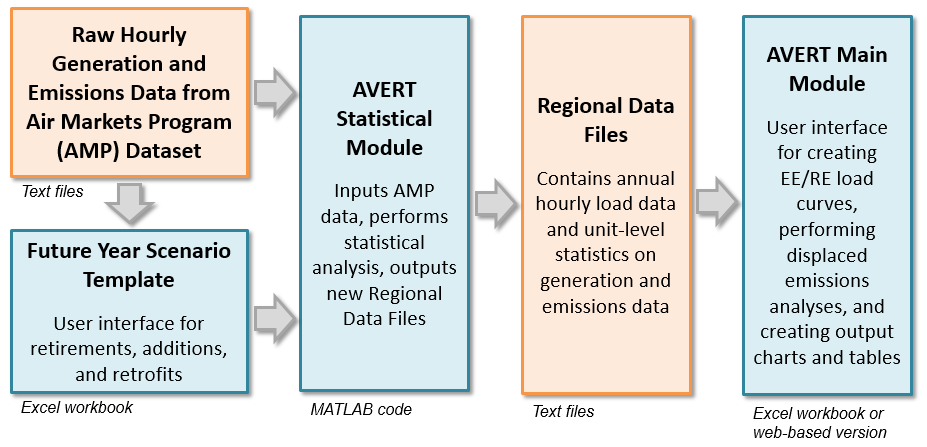AVERT Tutorial: How AVERT Works
AVERT is composed of three modules:
- Main Module—Uses historical data to estimate displaced emissions that would result from new energy programs.
This is the only module you need if you want to estimate displaced emissions based on prepackaged historical regional data.
- Future Year Scenario Template—Allows you to add, retire, or modify existing EGUs to create a future year scenario. Note: EPA recommends using AVERT to analyze impacts no more than five years from baseline.
Once you create a future year scenario, you must run it through the Statistical Module. Thus, if you wish to create and use a future year scenario, you will need to install all three components of AVERT: Main Module, Future Year Scenario Template, and Statistical Module.
- Statistical Module—Determines relationship between generators and demand on an hourly basis, and “feeds” this data to the Main Module when you upload a Regional Data File. You may use historical data available from the AVERT website directly and, if desired, retire/add/modify generators in a historical year by using the Future Year Scenario Template.
Historical recorded data include hourly generation, heat input, and emissions of SO2, NOx, and CO2 from each EGU that reports to EPA Clean Air Markets Division’s (CAMD’s) Air Market Program Data (AMPD). Reporting is a requirement for fossil-fuel generators 25 MW and greater. AVERT uses PM2.5, VOCs, and NH3 data from EPA's National Emissions Inventory.
If you have not already installed AVERT, click “AVERT installation” in the Resources box to install the AVERT modules you need.



